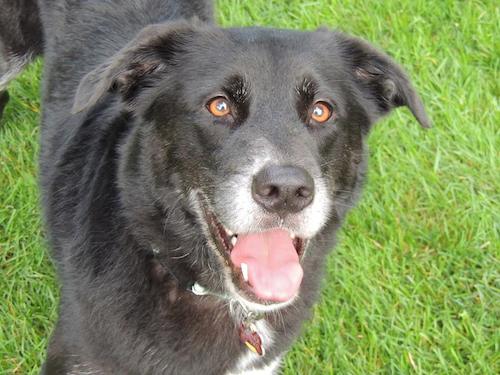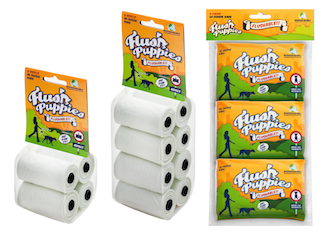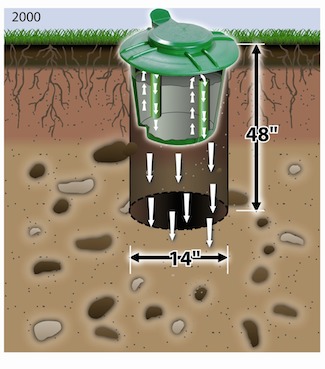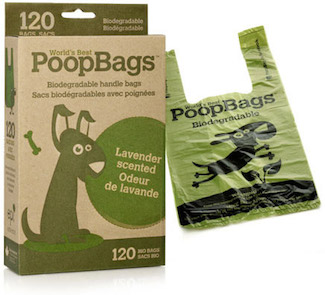What to Do With Doggie Doo? Eco-Options
Dogs are the best. Let's just get that out of the way. They are the ultimate animal companion; always there for us, loving unconditionally, and always, ALWAYS ready to play. And if you don't have time to play, they'll settle for a tummy scratch, no problem. But as anyone with a dog will tell you, there is one slight drawback to owning one: Poo. Dogs are animals, of course, and every animal on the planet has to eat to live, and with all that eating comes a lot of pooping. What to do with dog doo-doo can cause real headaches for those of us who worry about how we're treating the planet. There are more eco-friendly ways to deal with pet waste than bagging it up and throwing it in the trash.
The Doggie Doo Pile-Up
Dog owners don't need to be told about how much waste a dog can create, but here's a few facts that show that dog waste is no laughing matter from an ecological point of view.
- One 75 pound dog will produce approximately 500 pounds of poo in JUST ONE YEAR. As someone who has had to deal with picking up an entire winters' worth of doggie doo after the snow melts, this seems about right.
- The most conventional form of dog waste removal, putting it a plastic bag and throwing it out, contributes to 1000 bags of poo getting put in landfills annually. (Based on an average of 3 bags per day, per dog).
- These plastic disposal bags (made from non-renewable petroleum, don't forget) take up to 1000 years to break down in a landfill.
- A San Francisco study has shown that pet waste makes up 4 percent of the citys' entire waste stream. Yuck.
- Not picking up dog waste is just as bad: Dog waste is a leading source of bacteria contamination in groundwater runoff. That gets into our lakes and streams, where it harms and kills the animals that live there. And it can make us humans quite ill, as well.
Earth Friendly (or Friendlier) Dog Waste Options
Can we agree that sealing dog doo in plastic bags and then sealing that plastic in a landfill for a thousand years is not the best option for handling what is, after all, a completely natural material? It may be the most convenient way to get rid of waste, but it's not the right thing to do. So what do we do with all this poo piling up everywhere? There are some options that are less harmful to the planet.
Flush It:
From a biological standpoint, poop is poop. What do we do with our own waste? We certainly don't bag it and put it in the garbage can (at least not around here, we don't!) Most of us flush it down the toilet, where it is either processed at a wastewater treatment plant, or let a septic system break it down naturally. What's stopping us from flushing the dog doo down the loo? Flushing dog doo makes sure that it's treated properly and won't contribute to landfill overfilling and surface water contamination (it also ensures that the poo doesn't end up on the bottom of somebody's shoe. Or worse, their bare foot.)
There are a number of flushable waste bags on the market that are designed to be flushed. They break down right along with the waste. One popular brand is Flush Puppies, which is certified as compostable and flushable by the Biodegradable Products Institute (BPI). These types of flushable bags make it simple and easy to pick up your doggy's doo-doo and flush it without getting your hands dirty.
Bury It:
Another waste option is to bury it, and let mother nature break it down into its natural components. No flushing, no garbage. You could just dig a hole and bury it, if you've got the room, but a preferred method is to use a buried container specially designed to accelerate the decomposition process safely. The Doggie Dooley is a buried container with a ground-level lid that you put the dog waste in. Make sure there's enough moisture in the dooley, and add a little of their all-nature digester powder, and the waste quickly breaks down. It works basically like a miniature septic system that your pooch can call his or her very own!
By burying, or composting, dog waste, the natural process is allowed to happen freely. The waste is broken down and is returned to the earth, where it can work as food and nutrients for future plants and animals. That beats mummifying it in a landfill for a thousand years!
Bag It:
Let's face it: Sometimes you just have to bag the poo. The dog's gotta go when they've gotta go, and when you're away from home, or on a walk or run, the bag is the simplest option. Rather than use a regular plastic bag made from non-renewable petroleum-based plastic, there are better options.
PoopBags, started in 2003 by a fella who was just as concerned about all that plastic waste going into landfills as we are, makes a whole line of biodegradable bags for dog waste.
PoopBags are made from a variety of earth-friendly materials . These ingredients include plant fibers, vegetable starches and oils and USDA-certified, natural materials like corn starch.
Regardless of what kind of bag you put dog waste in, compostable or otherwise, if they're sealed into a modern landfill, they probably aren't going to biodegrade anytime soon. With a naturally-based compostable or biodegradable bag, at the very least you'll be supporting a brand that isn't using fossil fuel materials. It's a baby step, but it's a start.
However you deal with your dogs' waste, start by making sure you are dealing with it. Most municipalities have ordinances that mandate dog owners must pick up their dogs' waste, but even if you're in an area where they don't, it's the common-sense, right thing to do. And it's not good for the planet to have it left lying around. Pick it up.
Final Thoughts
Finding an alternative to bagging and throwing out doggy doo is worth the time and effort. Again, as someone who's had to drag the trash barrel to the curb after it's had bags of dog doo cooking in it for a week, your own sense of smell will thank you, if no one else will. But there are real advantages to not landfilling dog waste. Seek them out! And then go play fetch with your dog. He's ready.







































































